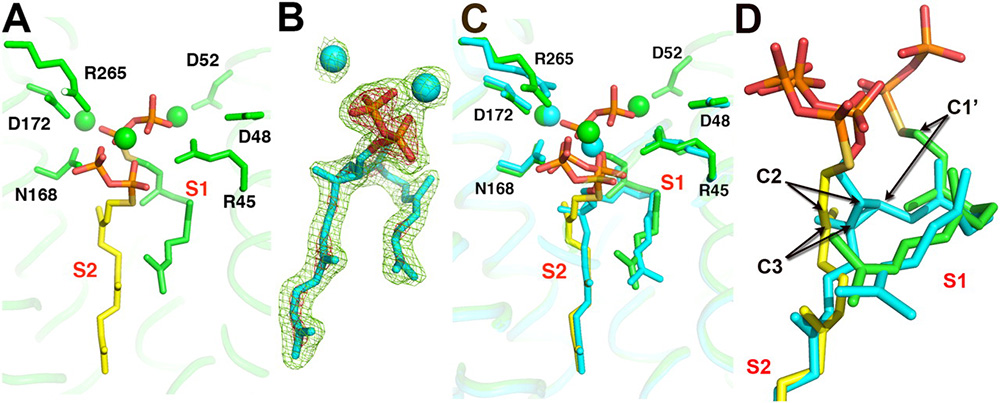
 中央研究院 生物化學研究所
中央研究院 生物化學研究所
"Head-to-head" terpene synthases catalyze the first committed steps in sterol and carotenoid biosynthesis: the condensation of two isoprenoid diphosphates to form cyclopropylcarbinyl diphosphates, followed by ring opening. Here, we report the structures of Staphylococcus aureus dehydrosqualene synthase (CrtM) complexed with its reaction intermediate, presqualene diphosphate (PSPP), the dehydrosqualene (DHS) product, as well as a series of inhibitors. The results indicate that, on initial diphosphate loss, the primary carbocation so formed bends down into the interior of the protein to react with C2,3 double bond in the prenyl acceptor to form PSPP, with the lower two-thirds of both PSPP chains occupying essentially the same positions as found in the two farnesyl chains in the substrates. The second-half reaction is then initiated by the PSPP diphosphate returning back to the Mg(2+) cluster for ionization, with the resultant DHS so formed being trapped in a surface pocket. This mechanism is supported by the observation that cationic inhibitors (of interest as antiinfectives) bind with their positive charge located in the same region as the cyclopropyl carbinyl group; that S-thiolo-diphosphates only inhibit when in the allylic site; activity results on 11 mutants show that both DXXXD conserved domains are essential for PSPP ionization; and the observation that head-to-tail isoprenoid synthases as well as terpene cyclases have ionization and alkene-donor sites which spatially overlap those found in CrtM.
論文網站:https://doi.org/10.1073/pnas.1010907107
作者群:Lin FY, Liu CI, Liu YL, Zhang Y, Wang K, Jeng WY, Ko TP, Cao R, Wang AH*, Oldfield E*
更新時間:2010.12.14
